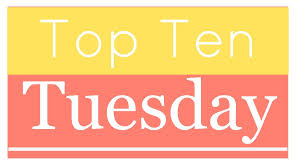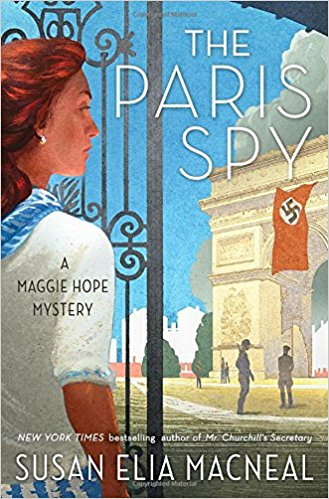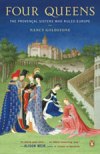 September 22 has long been celebrated as “Hobbit Day” since it’s both Bilbo and Frodo’s birthday and is also the date when the The Lord of the Rings (LOTR) starts. In a circular twist, Peter Jackson opens and ends The Hobbit movie trilogy on this day.
September 22 has long been celebrated as “Hobbit Day” since it’s both Bilbo and Frodo’s birthday and is also the date when the The Lord of the Rings (LOTR) starts. In a circular twist, Peter Jackson opens and ends The Hobbit movie trilogy on this day.
September 22 is also the date, in 2004, when Oceanic 815 crashed into waters unknown, in the pilot of the series LOST.
Eerie. I can’t understand why more hasn’t been made of this—on fan sites, media, or Twitter. It seems an astoundingly important connection between these two great sagas. (Spoilers Alert!)
Both are mythical stories which involve epic quests. Although LOTR opens with Bilbo’s birthday party, Frodo doesn’t actually begin his journey until the next day. Still, it is on the twenty-second when he acquires the Ring and that is what kicks off the action.
There are many other parallels. Each tale revolves around a group of disparate characters brought together by circumstance. In LOTR, the rise of Sauron and the discovery of the Ring prompts the formation of the Fellowship and ultimately takes these characters across Middle-Earth. A plane crash maroons the LOST characters on an uncharted island, desperate to make the best of it.
Both groups are terrorized by baddies (orcs, Nazgul, Uruk Hai in LOTR; the Others, Charles Widmore’s assassins, the Dharma Initiative on LOST), supernatural forces (Sarumon’s winter, dark magic in Moria and Mordor, Sauron’s eye in LOTR; the Smoke Monster, electromagnetic powers, the time shifts in LOST), and by a supreme villain (Sauron in LOTR; The Man in Black, though some might argue Ben, in LOST). Gandalf the White serves as a guide and leader in Middle-Earth. Likewise, on LOST, the guardian Jacob is always shown in white or light-colored clothing (well, when he is on the Island).
Each also features an unlikely hero who struggles to escape that role. Frodo wishes the Ring had never come to him and tries to give it to Galadriel then to Aragorn. Jack refuses to embrace faith (or fate) and just wants off the Island. Yet, each perseveres and ultimately saves the world: Middle-Earth in the case of Frodo, and our planet (not just the Island) in Jack’s. However, neither can return to the world he has saved, as they are both changed and damaged by their missions. Frodo sails into the West with the Elves. Jack sacrifices himself and dies on the Island.
Oddly, despite the September 22 connection and the fact that LOST show runners Damon Lindelof and Carlton Cuse professed admiration for Tolkien, there are almost no references to the author or his works. There were a few television promos that featured Gandalf’s quote, “not all who wander are lost.” This tease had me on the lookout for Tolkien Easter eggs, to no avail. It’s strange because episodes were rife with allusions to Alice in Wonderland, The Chronicles of Narnia, the novels of Charles Dickens, Lord of the Flies, Star Wars, and other favorites of Darlton. Charlie Pace sports a tattoo in Elvish and sometimes wears a t-shirt featuring the White Tree of Gondor, but that is because Dominic Monaghan acted as Merry Brandybuck in the LOTR movies.
Kate Austen, though, makes it off the Island to kick some orc butt in The Hobbit trilogy as Tauriel. Seriously, she was like the same character, which I loved.
Other than that, there is only a musical theme entitled “Down the Hobbit Hole” which plays when Jack and Locke (aka the Man in Black) lower Desmond down to the Source in the finale. But this is also a riff on Alice in Wonderland (Down the Rabbit Hole), and it’s a bit of a mislead because Desmond enters a creepy cave full of skeletons and gloom, whereas Tolkien assures us that hobbit holes are nothing like this.
“Not a nasty, dirty, wet hole, filled with the ends of worms and an oozy smell, nor yet a dry, bare, sandy hole with nothing in it to sit down on or to eat: it was a hobbit-hole, and that means comfort.”
He writes in The Hobbit and goes on to describe a cosy dwelling with polished brass, paneled walls, tiled floors, comfortable chairs, and lots of coat hooks as “the hobbit was fond of visitors.”
In the end, it may be that the choice of September 22 for the crash of Oceanic 815 was a merely a coincidence of the network programming schedule. Or perhaps—like so many other unexplained happenings on LOST—it was engineered by “the Island.”
Ten Ways to Celebrate Hobbit Day and Tolkien Week
The Hobbit: My Own Unexpected Journey
Happy Hobbitversary! 75 Years On




 It’s
It’s  30 Year Timeline of Banned Books Week
30 Year Timeline of Banned Books Week
 It’s a big weekend in
It’s a big weekend in 






